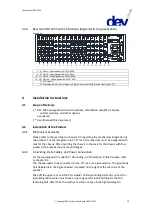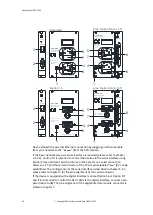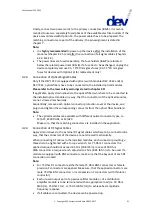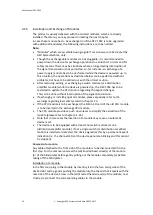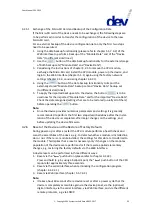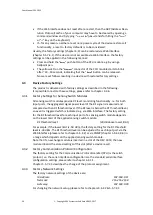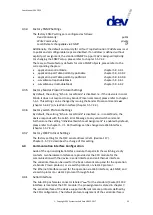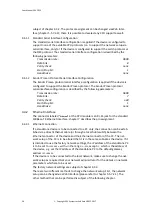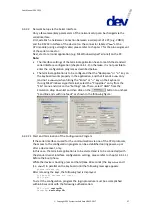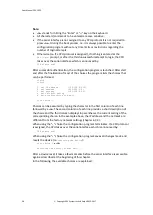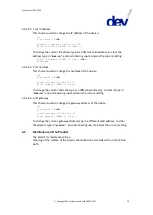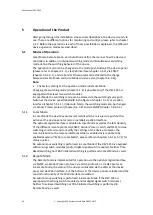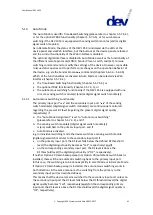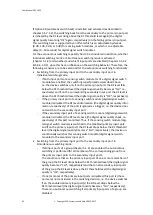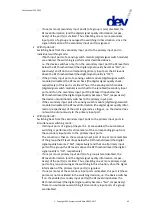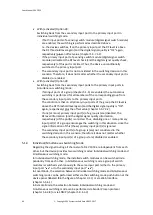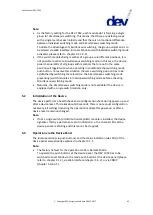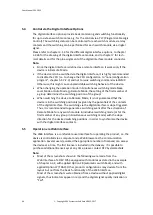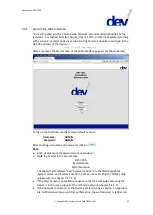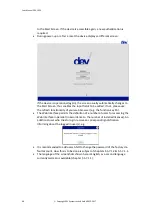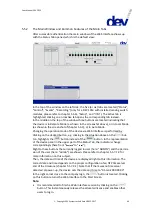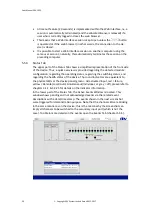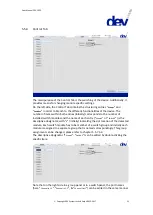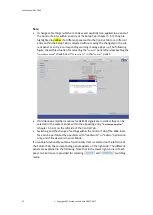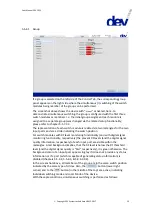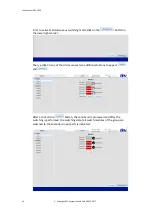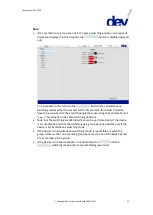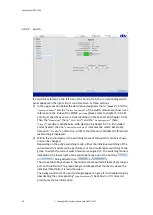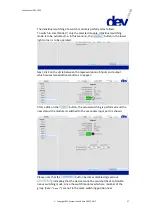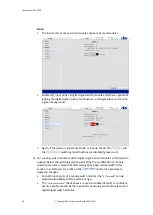
User Manual DEV 1953
Copyright DEV Systemtechnik GmbH 2015-2017
43
- If one (or more) secondary input port(s) of a group is (are) disabled, the
RF level information (and the digital signal quality information, respec-
tively) of the port(s) is omitted. Thus, disabling one or more secondary
input ports of a group encourages the switching in this situation, since the
signal information of the secondary input port(s) is ignored.
With Option 22:
Switching back from the secondary input port to the primary input port in
Individual switching mode:
- If both input ports of a sensing switch module (digital signal switch module)
are enabled, the switching is performed as described above.
I.e. the device switches only, if on the secondary input port the RF level falls
below the RF threshold level (the digital signal quality becomes "Fail", re-
spectively) and if on the corresponding primary input port the RF level is
above the RF threshold level (the digital signal quality is "OK").
- If the primary input port of a sensing switch module (digital signal switch
module) is disabled, the RF level check (the digital signal quality check,
respectively) of this port is omitted. Thus, if the sensing switch module
(digital signal switch module) is switched to the (enabled) secondary input
port and if on the secondary input port the RF level drops below the
RF threshold level (the digital signal quality becomes "Fail", respectively),
the device unconditionally switches to the primary input port.
- If the secondary input port of a sensing switch module (digital signal switch
module) is disabled, the RF level information (the digital signal quality infor-
mation, respectively) of the port is ignored as a trigger, i.e. the device does
not switch autonomously to the primary input port.
With Option 22:
Switching back from the secondary input ports to the primary input ports in
Simultaneous switching mode:
- If all input ports of a group (chapter 5.1.4) are enabled, the autonomous
switching is performed for all members of the corresponding group from
the secondary input ports to the primary input ports.
The condition is that on the secondary input port of one or more members
of the group the RF level drops below the RF threshold level (the digital
signal quality becomes "Fail", respectively) and that on all primary input
ports of the group the RF level is above the RF threshold level (the digital
signal quality is "OK", respectively).
- If one (or more) primary input port(s) of a group is (are) disabled, the
RF level information (and the digital signal quality information, respec-
tively) of the port(s) is omitted. Thus, disabling one or more primary input
ports of a group encourages the switching in this situation, since the signal
information of the primary input port(s) is ignored.
- If one (or more) of the secondary input ports is disabled, this port is (these
ports are) not considered in the switching decision, i.e. the device switches
if on the enabled secondary input port(s) the RF level drops below the
RF threshold level (the digital signal quality becomes "Fail", respectively).
There is no autonomous switching if all secondary input ports of a group
are disabled.
Содержание 1953
Страница 128: ...User Manual DEV 1953 128 Copyright DEV Systemtechnik GmbH 2015 2017 5 9 4 4 surveillance ...
Страница 140: ...User Manual DEV 1953 140 Copyright DEV Systemtechnik GmbH 2015 2017 This Page Intentionally Left Blank ...
Страница 143: ...User Manual DEV 1953 Copyright DEV Systemtechnik GmbH 2015 2017 143 12 Notes ...

